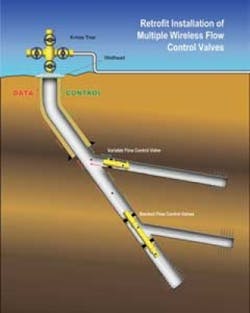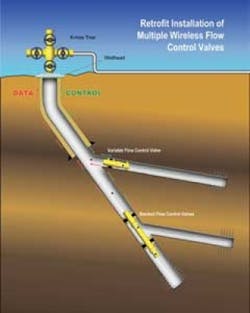Glass-syntactic foam insulates IRM divers
Syntactic foam from Trelleborg Offshore is helping to protect saturation divers from the cold during offshore inspection, repair, and maintenance tasks.
Unique LLC commissioned an insulation solution for one of its diving bells because of performance issues with previously installed insulation systems. These had proven susceptible to damage and water ingress, which could have impaired the systems’ thermal and buoyancy properties.
The diving bell serves as a submersible decompression chamber for a three-man saturation diving team performing tasks such as pipeline repair, platform installation support services, and cable maintenance. It takes them from an offshore vessel’s live-in hyperbaric chamber down to undersea depths of up to 1,000 ft (305 m), in sea temperatures varying from 45-65 °F (9-18 °C).
The helium/oxygen (Heliox) breathing mixture for the divers is imported through an umbilical from the support ship. As Heliox has a higher thermal conductivity than air, good thermal insulation is critical to the divers’ comfort. Dive times within the bell can vary from 10-12 hours, and the divers can remain under saturation conditions for up to 30 days.
For this project, Trelleborg applied its Trident insulation system, based on BASF’s ZEROHg glass syntactic polyurethane foam technology, in a one-pour, one-lift foam application. According to Trelleborg Offshore’s Product Manager in Houston James Vultaggio, “The application technique ensured no insulation interface joints for complete integrity. This eliminates water ingress into the foam, which could affect the thermal properties.”
The shell for the diving bell is constructed from ABS-approved carbon steel. The total weight of foam poured around the shell was 1,300 lb (600 kg). Trelleborg claims this was the first use of the Trident system in a custom-coating operation, and also the first instance of a diving bell being insulated with glass syntactic polyurethane foam. The solution, it adds, leads to reduced operating costs, as well as improving diver safety.
According to Unique’s Design Engineer Shane Julias, the insulation system combined with Trelleborg’s 3D modelling design provided high-accuracy thermal and buoyancy properties. “This enables us to predict the thermal insulation thickness required, and the uplift of the bell for accurate system buoyancy control.”

